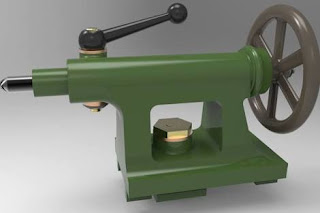Submerged arc welding is used for the production of long continuous weldings.In this case,a bare electrode (1.5-10mm) in the form of continuous wire is used; and the arc is struck between electrode wire and work piece under the flux,consisting of lime,silica,magnesium oxide,calcium fluoride and other elements.The flux is fed as a powder in front of the electrode.the flux near the arc melts and forms a protective coating of slag, which is easily detached from finished weld.The rate of cooling of the weld metal is slow,and it is also protected from atmosphere while cooling.The principle of submerged arc welding is shown in fig.In this case,an automatic feeding device ensures that the gap between the electrode and the base metal is constant.Electric current usually range between 300A and 2000A.The power supply is from a standard single or three phase power lines with a primary rating up to 440V.
ADVANTAGES:
The process offers the following advantages:
1)High rate of deposition
2)No visible arc with little fumes and spatter
3)Smooth weld surface for long lengths
4)High quality welds of excellent penetration,and
5)Weld area is free from surface ripples.
LIMITATIONS:
The process has the following limitations:
1) process is not flexible,and reqires costly equipment.
2) Slag must be removed after each pass
3) Process is not suitable for thin plates and for overhead welding,and limited to the flat or horizontal position welds.
APPLICATIONS:
Developed in the 1940s,submerged arc welding (SAW) Process is best suited for the continuous welding of components having 12 to 50mm thickness. This process is used to weld a variety of carbon and alloy steel,and stainless steel sheets.Typical applications are the welding of pressure vessels,boiler plates and pipes.



I learn new information from your blog, you are doing a great job. Keep it up..
ReplyDeleteMore tips here
Extremely great!!! At the point when I look for this I discovered this site at the head of all web journals in internet searcher. Top Welding helmet
ReplyDeleteThanks for sharing this information. Very useful blog you provided. the SAW Welding Tools are available here.
ReplyDeleteGreat information on blog. keep posting more.
ReplyDeleteBuy Megmeet Dex PM300 Welding Machine in Ludhiana.